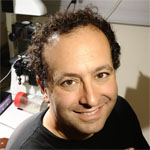Nature has a brief “Research Highlight” on our recent PLoS One paper.
Nature 458, 263 (19 March 2009) | doi:10.1038/458263a; Published online 18 March 2009
Genomics: Big is beautiful
Finding gene regulators in the fruitfly Drosophila melanogaster has proved difficult: looking for conserved non-coding DNA sequences, a method that works well in vertebrates, has been unsuccessful. Michael Eisen at the University of California, Berkeley, and his co-workers suggest that this is because the fly’s genome is compact — not because its regulatory architecture differs substantially from that of vertebrates.
Eisen’s group sequenced various loci from four species of tephritid — ‘true’ fruitflies — which have large genomes containing islands of conserved non-coding DNA sandwiched between unconserved stretches. This allowed the researchers to pinpoint six conserved tephritid non-coding regions that functioned as gene enhancers in D. melanogaster embryos. Until now, the compact size of the D. melanogaster genome has been considered a boon to scientists.
 I'm a biologist at UC Berkeley and an Investigator of the Howard Hughes Medical Institute. I work primarily on flies, and my research encompases evolution, development, genetics, genomics, chemical ecology and behavior. I am a strong proponent of open science, and a co-founder of the
I'm a biologist at UC Berkeley and an Investigator of the Howard Hughes Medical Institute. I work primarily on flies, and my research encompases evolution, development, genetics, genomics, chemical ecology and behavior. I am a strong proponent of open science, and a co-founder of the 